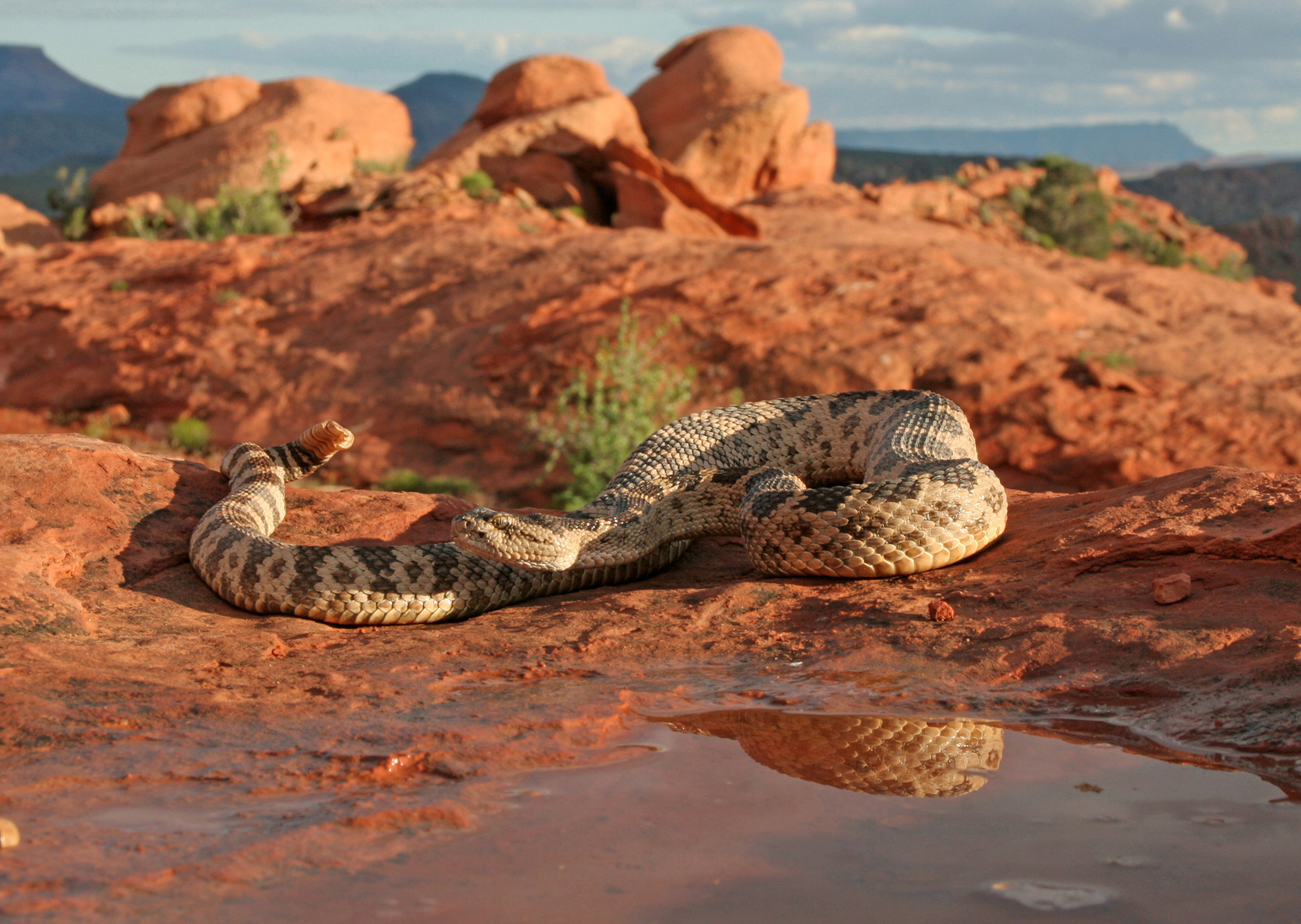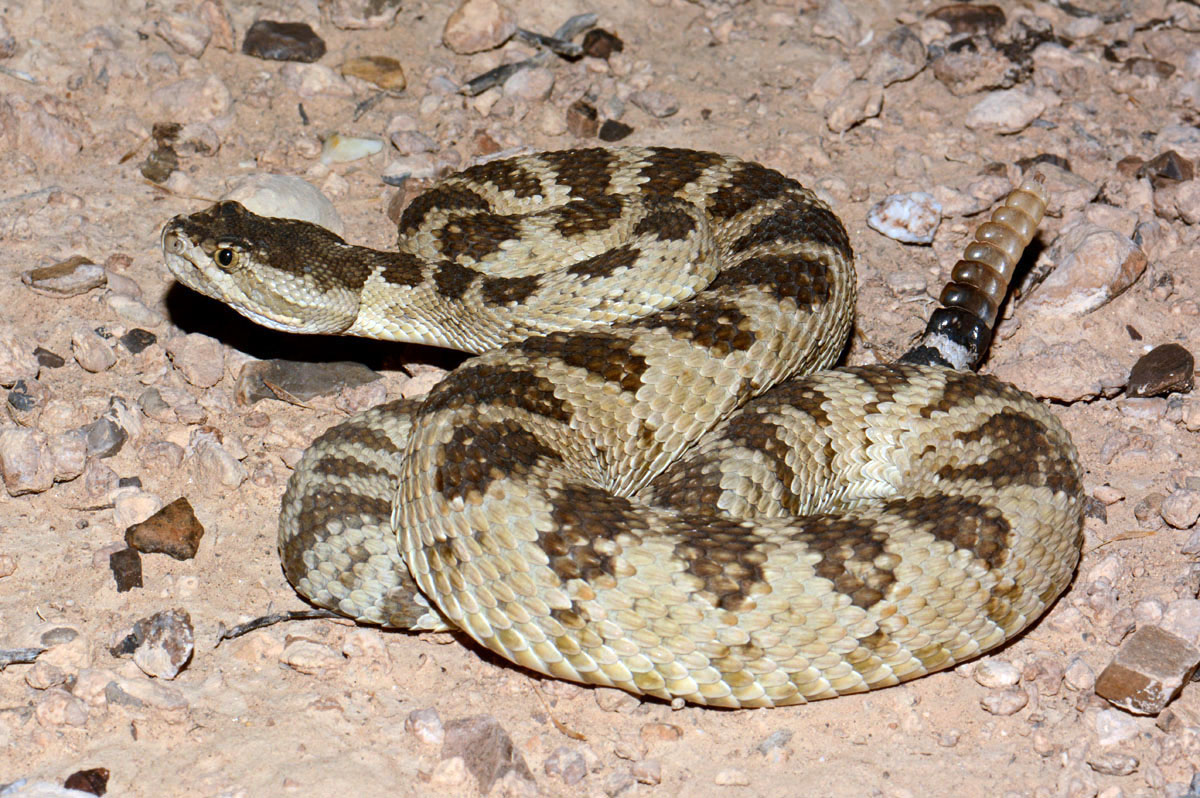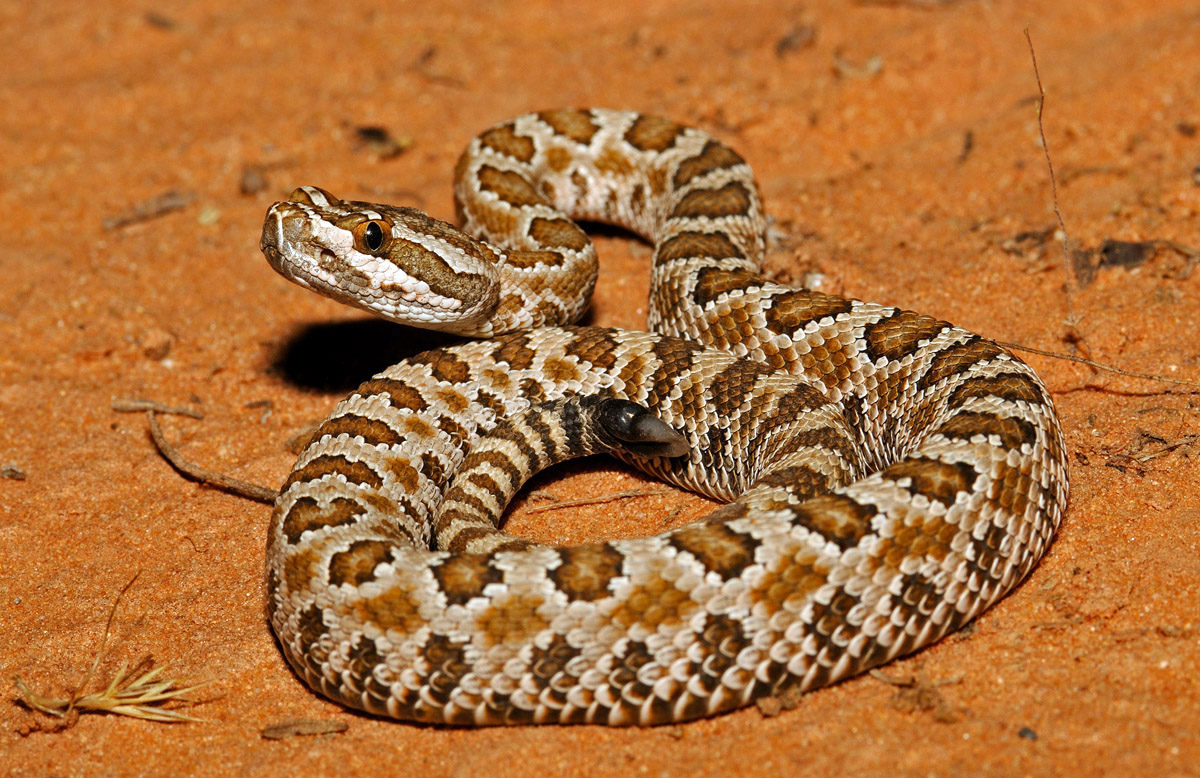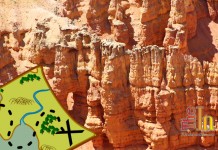
How to stay safe and avoid conflicts with rattlesnakes this spring and summer
With the warmer weather, rattlesnakes will begin emerging from their winter dens, and you may encounter one while hiking or spending time outdoors. Here are some tips to help you stay safe and aware while recreating outside this spring and summer.
Rattlesnakes in Utah
Native snakes are an important part of Utah’s ecosystem. Utah has five rattlesnake species, the most common of which is the Great Basin rattlesnake. Rattlesnakes help to reduce diseases spread by rodents, and their dens may provide shelter for other snakes. Individual rattlesnakes move around a large area (known as their “home range”) and will usually move on from a specific location within a short period of time.
Rattlesnakes are most active during the late spring and early summer months. This is when they are on the move, looking for food, water, and mates. Although their activity levels peak at dawn and dusk, rattlesnakes can be encountered at all hours, especially in the spring.
Rocky benches, high-elevation slopes, and dry canyons are the most common places in Utah where rattlesnakes are encountered, often while people are out hiking, rock climbing, or biking. However, you may also encounter rattlesnakes at lower elevations and in open areas. A rattlesnake’s camouflage helps it blend into its surroundings, so you may pass by one and never know it.
“An important action you can take is becoming more knowledgeable about the rattlesnakes that you may encounter around your residence or during outdoor recreational activities,” Utah Division of Wildlife Resources Native Herpetology Coordinator Alyssa Hoekstra said. “Being aware of species you may encounter is a great way to be proactive to avoid unwanted interactions with rattlesnakes and prepares you to respond in a safe manner.”
What to do if you encounter a rattlesnake
Utah law protects rattlesnakes, making it illegal to harass or kill one. Rattlesnakes use their venom to subdue prey so they can eat it, and they will only bite defensively if they feel threatened.
Rattlesnakes do not chase people and will stop aggressive or defensive behavior once you are far enough away. Snake bites are quite rare, and harassing or trying to kill the snake illegally greatly increases the risk of being bitten. Never corner a rattlesnake or get close enough for a bite to occur.
When you are out hiking, make sure to always watch the trail ahead of you and to check carefully before stepping over rocks, reaching onto ledges or sitting down on a rock or log. Keep your hands and feet where you can see them and avoid reaching into dense brush or crevices before visually checking them to make sure they are clear.
“Like most wild animals, rattlesnakes fear humans and will do anything they can to avoid us,” Hoekstra said. “If a snake feels threatened, it may act in defense. The best course of action is to maintain a safe distance.”
If you do encounter a rattlesnake, the following tips can help you — and others — stay safe:
- Remain calm and stay at least 10 feet from the snake, giving it plenty of space. If the snake is in the middle of the trail, step off the trail and go around it.
- Do not try to kill the snake. Doing so is illegal and greatly increases the risk of the snake biting you.
- Do not throw anything at the snake (rocks, sticks, etc.). Rattlesnakes may move toward you as they attempt to flee.
- Alert other people to the snake’s location. Advise them to use caution and to avoid getting close to the snake. Keep children and pets away.
- If you hear a rattle, try to locate where the sound is coming from before you react so you don’t step closer to the snake or on top of it.
There is no need to kill a rattlesnake because you fear it will return to an area. If you repeatedly see one in a problematic area or encounter one in a public park, yard, or play area, you can contact the nearest DWR office to report it.

Helping prevent rattlesnake encounters with dogs
To avoid interactions between dogs and rattlesnakes, it is highly recommended that you keep your dog on a leash, especially when you hike during the late spring and early summer months. Allowing your dog to roam without a leash increases the likelihood of a rattlesnake encounter. You can also do rattlesnake aversion training for your dog, which can help them learn to avoid rattlesnakes.
Note that not all emergency veterinary hospitals keep antivenom in stock. Be sure to check with the emergency veterinary hospitals in your area to learn which locations have it in stock so you know where to take your pet if it’s bitten by a rattlesnake.
What to do if you or someone you are with is bitten by a rattlesnake
Rattlesnake bites are a serious medical emergency and require getting medical attention at a hospital as soon as possible. Rattlesnake bites in the U.S. are seldom deadly, especially when the appropriate medical care is received.
If you are bitten by a rattlesnake, do not attempt to suck the venom from the wound — this can introduce bacteria from your mouth to the bite and can increase the risk of infection. Do not apply heat, cold or a tourniquet to the bite; these steps may increase the risk of tissue damage. The best course of action is to remain calm and immediately go to the nearest hospital.
If you regularly recreate in areas outside of cell phone service, you may want to consider investing in a satellite phone for emergencies.

Keeping rattlesnakes out of your yard
Depending on where you live, you may occasionally find a snake in your yard. Here are some useful tips to help keep rattlesnakes out of your yard:
- Reduce the number of places that provide snakes with shelter. Brush, wood, rock and junk piles are all things you should eliminate from your yard.
- Control rodent populations: Bird feeders may draw rodents to yards, which in turn can attract snakes.
- Block off crawl spaces. Large holes underneath sheds and porches can provide shelter for rattlesnakes.
- Don’t leave standing water in your yard. Rattlesnakes may come to water sources, especially during drought years.
Identifying a rattlesnake
Gopher snakes (also referred to as bull snakes and blow snakes) are very abundant in Utah and are often mistaken for rattlesnakes due to similarities in their appearance and behavior. When alarmed, gopher snakes hiss loudly, flatten their heads into a triangular shape, curl their bodies into an S-like shape and vibrate their tails. A rattlesnake’s tail is wide and blunt — and tipped with a rattle, hence the name. A gopher snake’s tail is slender, pointed and lacks a rattle. However, rattlesnakes may lose their rattles or sometimes may not rattle when they are disturbed. Do not count on a rattlesnake to reveal its presence by rattling.
Rattlesnakes also have broad, triangular-shaped heads and vertical eye pupils, while non-venomous snakes in Utah tend to have longer snouts and round pupils. If you cannot identify a snake you encounter, the best course of action is to move away and treat the snake as if it were venomous.
You can get additional rattlesnake safety tips on the Wild Aware Utah website. You can also listen to the DWR Wild podcast to learn more information about the rattlesnakes in Utah.



